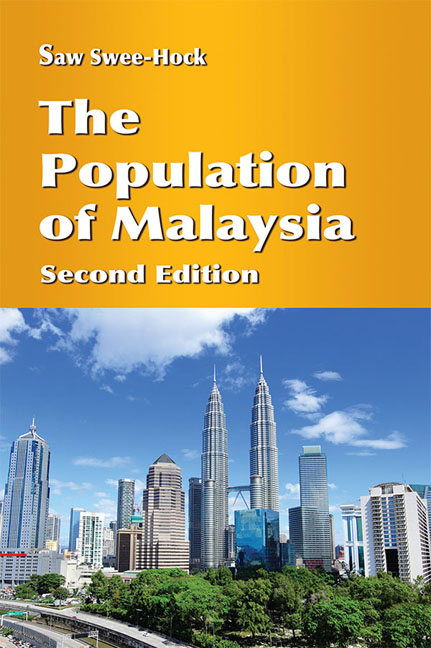Book contents
- Frontmatter
- Contents
- List of Tables
- List of Figures
- Foreword
- Preface
- 1 Introduction
- 2 External Migration
- 3 Internal Migration
- 4 Ethnic and Religious Patterns
- 5 Population Growth and Distribution
- 6 Population Structure
- 7 Nuptiality Trends and Patterns
- 8 Fertility Trends and Differentials
- 9 Mortality Trends and Differentials
- 10 Labour Force
- 11 Future Population Trends
- Bibliography
- Index
9 - Mortality Trends and Differentials
Published online by Cambridge University Press: 19 May 2017
- Frontmatter
- Contents
- List of Tables
- List of Figures
- Foreword
- Preface
- 1 Introduction
- 2 External Migration
- 3 Internal Migration
- 4 Ethnic and Religious Patterns
- 5 Population Growth and Distribution
- 6 Population Structure
- 7 Nuptiality Trends and Patterns
- 8 Fertility Trends and Differentials
- 9 Mortality Trends and Differentials
- 10 Labour Force
- 11 Future Population Trends
- Bibliography
- Index
Summary
Our discussion of mortality trends and differentials will depend solely on the official statistics generated from the registration of births and deaths already reviewed briefly in the previous chapter. The death statistics compiled from the registration system is quite complete on account of the strict rules governing the compulsory registration process. It is mandatory to obtain a death certificate issued by a doctor or an authorized person to register the death as well as to commence with the burial ceremony.
GENERAL MORTALITY TRENDS
As in the case of fertility, the long-term trends in mortality will be examined in terms of three-year periods from 1970 onwards in order to reduce the fluctuation in the annual figures. In Table 9.1 are therefore given the annual average deaths and the crude death rates for threeyear periods. The population denominator employed in the calculation of the crude death rate is taken as the average of the three mid-year populations in each of the three-year periods.
Except for the two periods from 1976 to 1981, the annual average number of deaths increased from 72,769 in 1970–72 to 132,192 in the latest period 2009–11. The rate of increase ranged from slightly below 1 per cent to about 10 per cent. It should however be emphasized that the rise in the number of births over the years was merely a reflection of the increasingly larger population as well as the ageing of the population. The crude death rate, on the other hand, followed a downward path. From a level of 6.5 per thousand population in the period 1970–72, the crude death rate moved down to reach the low of 4.4 in 2000–02, and then went up to 4.6 in the latest period. In the years ahead, there is a possibility that the crude death rate might display a gentle upward trend as the population continues to age.
The crude death rate is not a very good measure of overall mortality since it is distorted by the age structure of the population. An older population will invariably yield a higher crude death rate than a younger population. Despite the inherent shortcoming of the crude death rate, we can say that the general level of mortality during the last four decades has been going downward.
- Type
- Chapter
- Information
- The Population of Malaysia , pp. 161 - 171Publisher: ISEAS–Yusof Ishak InstitutePrint publication year: 2015



